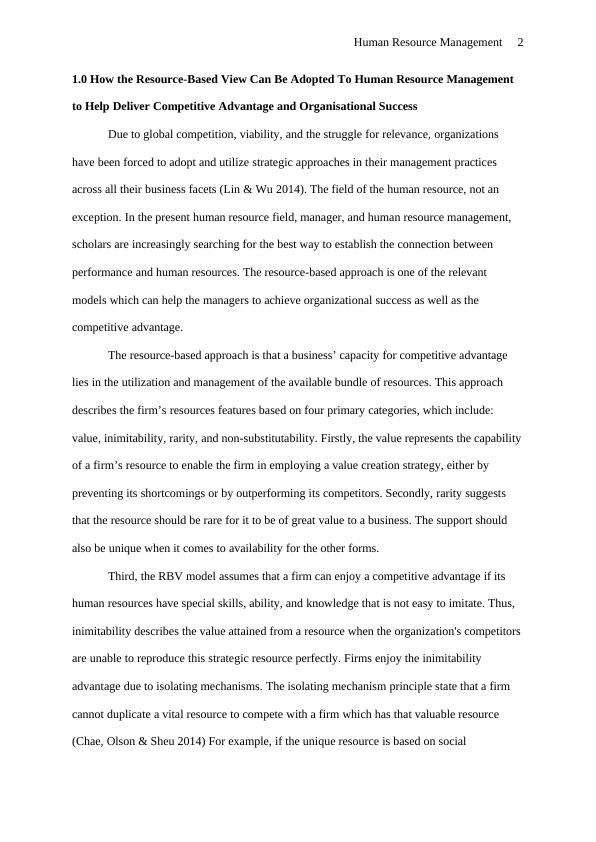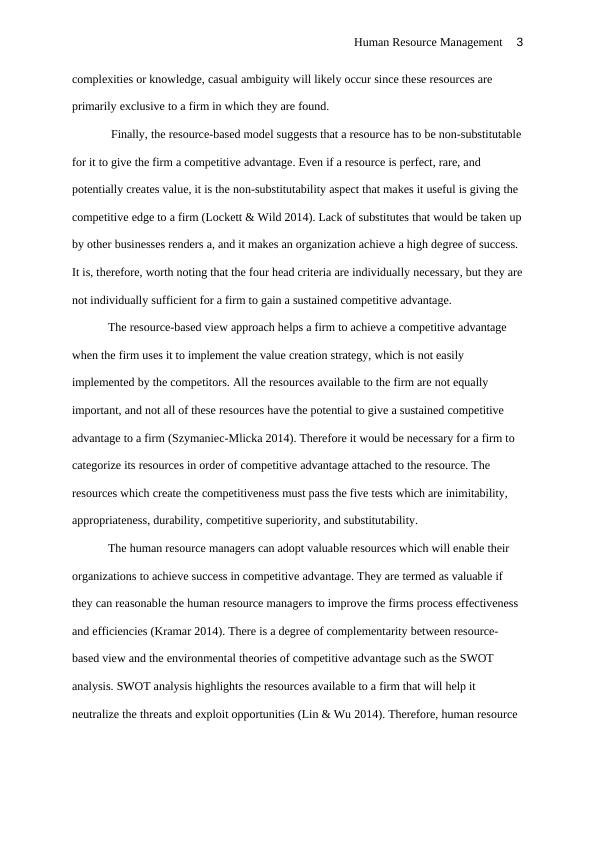Resource-Based View in Human Resource Management for Competitive Advantage
10 Pages3217 Words425 Views
Added on 2022-11-23
About This Document
This article discusses the Resource-Based View approach in Human Resource Management for achieving competitive advantage and organizational success. It also highlights the major threats currently facing organizations operating in the United Kingdom labor market, including Brexit, employment compliance, employment costs, automation, and regulations.
Resource-Based View in Human Resource Management for Competitive Advantage
Added on 2022-11-23
ShareRelated Documents
End of preview
Want to access all the pages? Upload your documents or become a member.
Managing Human Resources
|14
|3837
|425
Mabe Resource Based Consideration
|13
|3459
|96
VRIO Analysis Assignment - Virgin Atlantic
|5
|642
|124
Business Management Analysis 2022
|6
|699
|26
Business Management and Strategic Management - Doc
|6
|899
|23
A Case Study On Dyson Business
|3
|1058
|450



